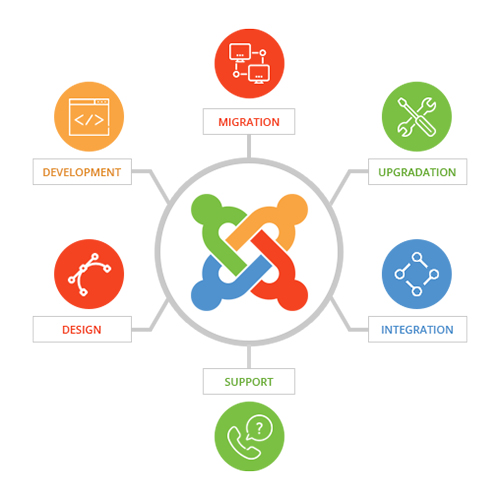
Optimize joomla website
Product Info
Optimizing a Joomla website involves steps such as using a lightweight template, enabling caching, optimizing images, minifying CSS and JavaScript, enabling Gzip compression, optimizing the database, enabling browser caching, using a Content Delivery Network (CDN), removing unnecessary extensions, and optimizing SEO. These measures improve website performance, speed, and search engine rankings.
Optimizing a Joomla website involves several steps to improve its performance, speed, and search engine rankings. Here are some key areas to focus on when optimizing your Joomla website:
-
Use a Lightweight Joomla Template: Choose a well-coded, lightweight template that doesn't contain unnecessary bloat or complex code. Avoid templates with excessive JavaScript and CSS files, as they can slow down your website's loading time.
-
Enable Caching: Joomla has built-in caching features that can significantly improve website performance. Enable caching in the Global Configuration settings and consider using a caching extension like JCH Optimize or JotCache for more advanced caching options.
-
Optimize Images: Large image file sizes can slow down your website. Use an image optimization tool like Kraken.io or TinyPNG to compress your images without losing visual quality. Additionally, consider lazy loading images so that they only load when they come into the viewport.
-
Minify CSS and JavaScript: Minification reduces the file size of CSS and JavaScript files by removing unnecessary characters like spaces and comments. Use Joomla extensions like JCH Optimize or JBetolo to automatically minify and combine these files.
-
Enable Gzip Compression: Gzip compression reduces the size of files sent from your server to the visitor's browser. Enable Gzip compression in your Joomla website's .htaccess file or use a compression extension like JCH Optimize.
-
Optimize Database: Regularly clean up your Joomla database by removing unused data, such as old revisions, expired sessions, and expired cache files. Use extensions like Admin Tools or Akeeba Backup to help optimize and clean up your database.
-
Enable Browser Caching: Configure your Joomla website to leverage browser caching. This allows returning visitors to load your site faster by storing static resources (such as images, CSS, and JavaScript files) in their browser cache.
-
Use Content Delivery Network (CDN): A CDN stores copies of your website's static files on multiple servers worldwide, reducing the distance between the user and the server. This improves loading times for visitors in different locations. Popular Joomla CDN extensions include JoomShaper's SP Page Builder CDN or JCH Optimize with CDN integration.
-
Remove Unnecessary Extensions and Plugins: Unused or outdated extensions can slow down your website and pose security risks. Regularly review your installed extensions and remove any that are no longer needed.
-
Optimize SEO: Ensure your Joomla website follows best practices for search engine optimization. Use SEO extensions like SH404SEF or JoomSEF to generate search engine-friendly URLs, optimize meta tags, and create XML sitemaps.
Remember to always take a backup of your website before making any significant changes and test the optimizations thoroughly to ensure they don't break any functionality.
